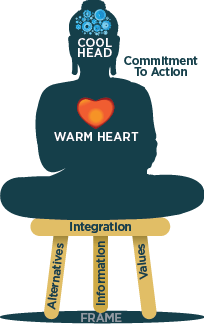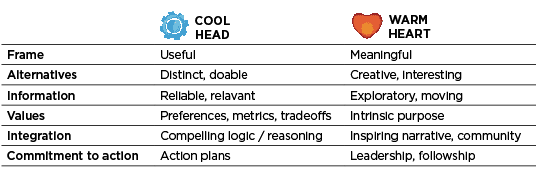In a remarkable paper in 1980, titled “An Assessment of Decision Analysis,” Stanford’s Professor Ronald Howard wondered if Buddha was the “First Decision Analyst” and wrote the following:
There are those who believe that there is something “cold and inhuman” about rational analysis. I believe that to be human is to be reasoning as well as compassionate. My ideal here is Buddha:
“Perhaps the most striking thing about him, to use the words of J. B. Pratt, was his combination of a cool head and a warm heart, a blend which shielded him from sentimentality on the one hand and indifference on the other. He was undoubtedly one of the great rationalists of all times, resembling in this respect no one as much as Socrates. Every problem that came his way was automatically subjected to the cold, analytical glare of his intellect. First, it would be dissected into its component parts, after which these would be reassembled in logical, architectonic order with their meaning and import laid bare (Smith [29]).”
Perhaps Buddha was the first decision analyst.
The biggest contribution of Decision Analysis has been the framework of Decision Quality, which packages the wisdom in this field for mass consumption and everyday usage. While this framework has held good for over three decades, it focuses explicitly on “cool head” and does not have much to say about “warm heart.” That is not how decision analysis stalwarts practice the profession – those with decades of experience emphasize the importance of aligning heart and head. And yet, using language that emphasizes the head creates room for miscommunication to those who are only reading the framework on paper without having the good fortune of working with great teachers of this discipline.
The original framework proposed six elements of Decision Quality:
- Helpful Frame
- Creative Alternatives
- Useful Information
- Clear Values
- Sound Reasoning
- Commitment to action

We found these categories to be largely relevant, and with minor changes, are able to emphasize the locus of meaning around the head and the heart, as shown in the table below:

A useful frame is one that helps us identify what to do next. A meaningful frame taps into our deepest identity and adds richness to our life and purpose. Distinct and doable alternatives help us stay rooted in practicality. Creative and interesting alternatives hold our attention and inspire us to move forward. Reliable and relevant information protects us from falling off the cliff with our emotions and agendas, while information that moves us and inspires us to explore a deeper part of ourselves gives us the impetus to be the change. Preferences, metrics and tradeoffs all help to establish transparency and consistency in practical allocation and trading of resources, while intrinsic purpose helps us be clear about who we want to be. In the next dimension, we have replaced “sound reasoning” with integration, of which, the head-dimension involves sound reasoning and compelling logic, while the heart dimension is about developing an inspiring narrative and establishing community support around the decision. Commitment to action has two elements – commitment and action. Action planning is more about logistics and planning, while commitment is more about riding the storm and staying true to one’s convictions, requiring among other things, leadership and followership.
To get a deeper understanding of this framework, watch this video. It is no mean task to attempt updating a popular framework that has held good for three decades, and this is a work in progress. We would love to hear from you, so do share your comments on the video page.



